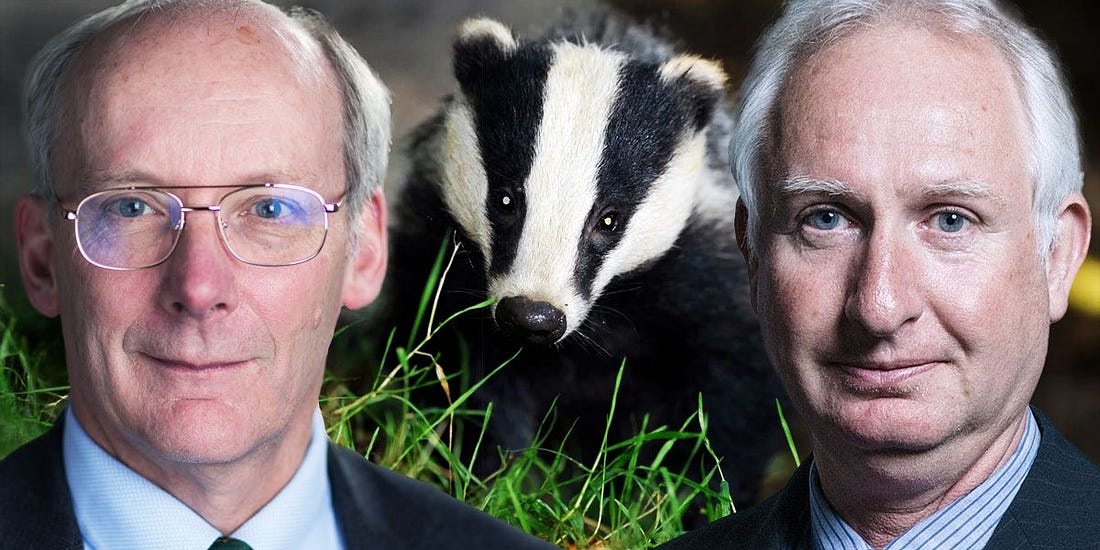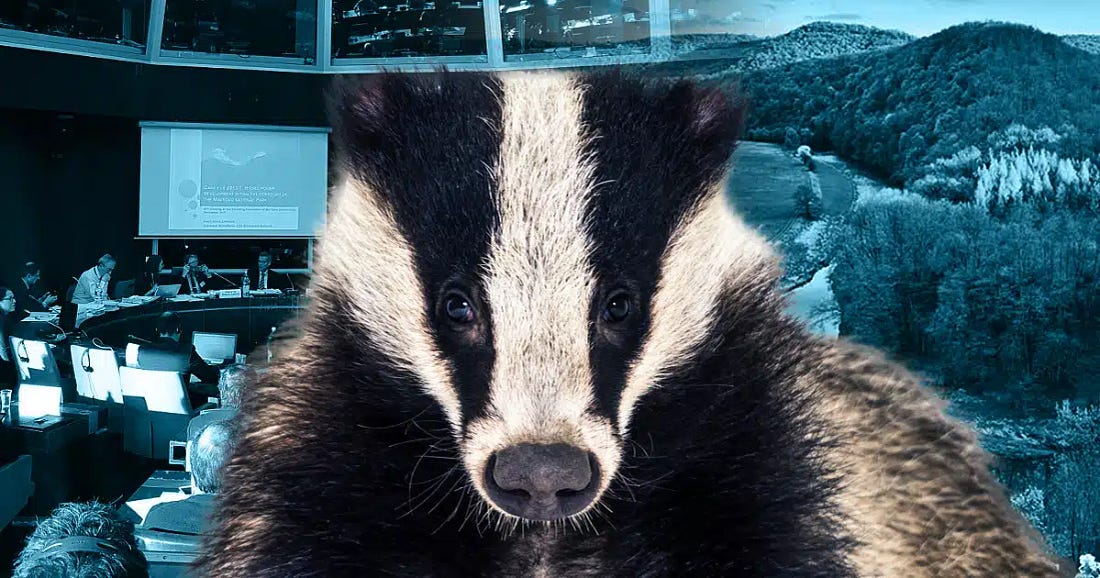From Rob Pownall Protect the Wild
Protect the Wild has just uncovered a secret government review that has been happening behind closed doors. In January, DEFRA launched a review to look at the latest science on bovine TB (bTB) control, with findings due in June. But instead of choosing independent experts, officials under Minister Daniel Zeichner have filled the panel with people who have spent years pushing for badger culling.
This is yet another example of vested interests corrupting decision-making at the highest levels. The recommendations from this review will be handed to the discredited BTB Partnership, a group dominated by livestock farmers, industry vets, and other pro-cull advocates.
We already fought off Rishi Sunak’s sham consultation in March—thanks to public pressure, that was thrown in the bin. But now Labour is still allowing culling to continue in the so-called Low Risk Area, under pressure from the very same officials who pushed mass badger culling under the Tories. This must end.
One name at the centre of this latest review? Professor Charles Godfray of Oxford University, who has been reappointed to examine bTB science—despite his long history of backing badger culling.
Godfray was previously involved in the 2018 government review on bTB, which led to continued badger culling under Michael Gove. His colleague Cristl Donnelly, who co-authored work justifying culling in 2013, has stepped back from being reappointed this time—perhaps sensing the controversy. But that hasn’t stopped DEFRA from stacking the panel with pro-cull academics, including statistician Bernard Silverman, another Oxford-based researcher, tasked with checking the work of his own university.
This is Oxford University marking its own homework. A sham. A total farce.
Let’s not forget—Oxford academics have been at the heart of the badger culling disaster from the beginning. Professor John Krebs led the 1997 review that first pointed the finger at badgers, setting in motion decades of failed policy. The same people who got it catastrophically wrong then are now being given another chance to rewrite history.
Sign the petition
Badger culling has been an abject failure—scientifically, ethically, and politically. The government’s own figures show it has made no meaningful impact on bovine TB rates in cattle. Yet Labour, despite promising to follow the science, is allowing culling to continue in parts of England.
Why? Because the same biased advisors are still embedded in DEFRA, still pushing their failed policies, and still refusing to let go of their obsession with badger blame.
The questions we need answered are:
🔴 Why is DEFRA reappointing the same discredited figures to lead this review?
🔴 Why is Minister Zeichner allowing Oxford academics with clear conflicts of interest to dominate the panel?
🔴 Why is the Chief Veterinary Officer and the APHA still pushing the same pro-cull agenda?
🔴 Who is really making the decisions inside DEFRA?
Sign the petition
We are calling for immediate action:
1️⃣ Professor Charles Godfray must step down from the panel.
2️⃣ No Oxford academics should be involved in reviewing their own work.
3️⃣ No panel members should have a history of supporting badger culling.
4️⃣ Minister Zeichner must act decisively and appoint a truly independent review team.
5️⃣ The Chief Veterinary Officer and APHA leadership must be held accountable for their failures.
6️⃣ All badger culling must end—immediately.
This is a fight we can win. We’ve done it before. The public stopped Sunak’s consultation in March. We can stop this corrupt review too.
📢 Write to Minister Daniel Zeichner—demand he removes Godfray and overhauls this panel. We’ve set up a petition so you can send our pre-written letter in just a single click. Click the button below to take action in just a few seconds.
Sign the petition
📢 Sign the petition to end the Badger cull itself—help us expose this scandal and pressure the government to act.
📢 Share this far and wide—the public needs to know what’s happening behind closed doors.
For 14 years, badgers have been blamed and slaughtered for a problem that lies with poor cattle testing and biosecurity failings in the livestock industry. Labour promised a fresh approach. But unless we act now, this will just be Tory badger culling 2.0—with the same people pulling the strings.
It’s time to end the culls. No more excuses. No more sham reviews. No more badger scapegoating.
Sign the petition




















